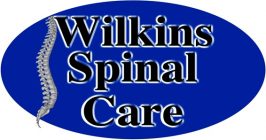UNLOCKING THE JAW: A PATH TO TMJ RELIEF
Are you having difficulty opening or closing your jaw? Are you always feeling pain or hearing clicking sounds when moving your mouth? If you experience one or multiple symptoms, you may have Temporomandibular Joint Dysfunction (TMJ). In this week’s blog, we will discuss the anatomy of the jaw joint, discuss what TMJ is, and explain what we can do to help.
Anatomy of the Jaw Joint
The jaw joint is considered an ellipsoidal synovial joint that allows the jaw to open, close, protrude, retract, and lateral deviate (move side to side). Just like any joint, ligaments, muscles, blood vessels and nerves surround the jaw joint and work together to provide optimal function. The muscles of the jaw work together to perform functions essential for life, including breathing, chewing, swallowing, sucking, talking, and facial expressions. The face has a huge network of arteries that branch from the external carotid artery that supply oxygen and nutrients to the jaw, teeth, and face.
What is TMJ?
Apart from osteoarthritis and degenerative joint disease, the jaw doesn’t have many conditions that affect it. When people experience persistent jaw pain, their thought is TMJ. TMJ is a jaw disorder that creates moderate to severe pain along the outline of the jaw during movement. Other common symptoms of TMJ include clicking/popping sounds, facial pain, aching pain in and around the ear, difficulty and pain while chewing, and locking of the jaw, making it difficult to open and close the mouth. TMJ can be caused by arthritis, disc erosion to the joint space, blunt force trauma to the jaw, or chronic clenching/grinding teeth.
What Can We Do to Help?
Some people experience mild and tolerated TMJ pain, where other cases are more severe and unbearable. Most people who experience chronic TMJ try medications, oral splints such as mouthguards, muscle relaxants, physical therapy, and rarely, surgery. Is there a better solution for treating TMJ?
Just like any joint, a chiropractor successfully manages TMJ with manipulative therapy. There are several chiropractic techniques that have developed a TMJ protocol. The jaw is a very delicate joint to work with, so it is important to find a chiropractor who can help treat TMJ because not every chiropractor is trained to do so.
At our office, we use a lighter force of an adjustment to the jaw. Dr. Steinert is certified to use the Activator adjusting instrument tool. Activator Methods has a protocol for each joint, including the jaw. What is the Activator? Stay tuned for a future blog about instrument adjusting.
For more information or questions about TMJ and management, please call us at (724) 547-3377 and checkout our website at www.drlarrywilkinsspinalcare.com for more content.
Yours In Health,
Larry E. Wilkins, DC
Brian M. Steinert, DC

